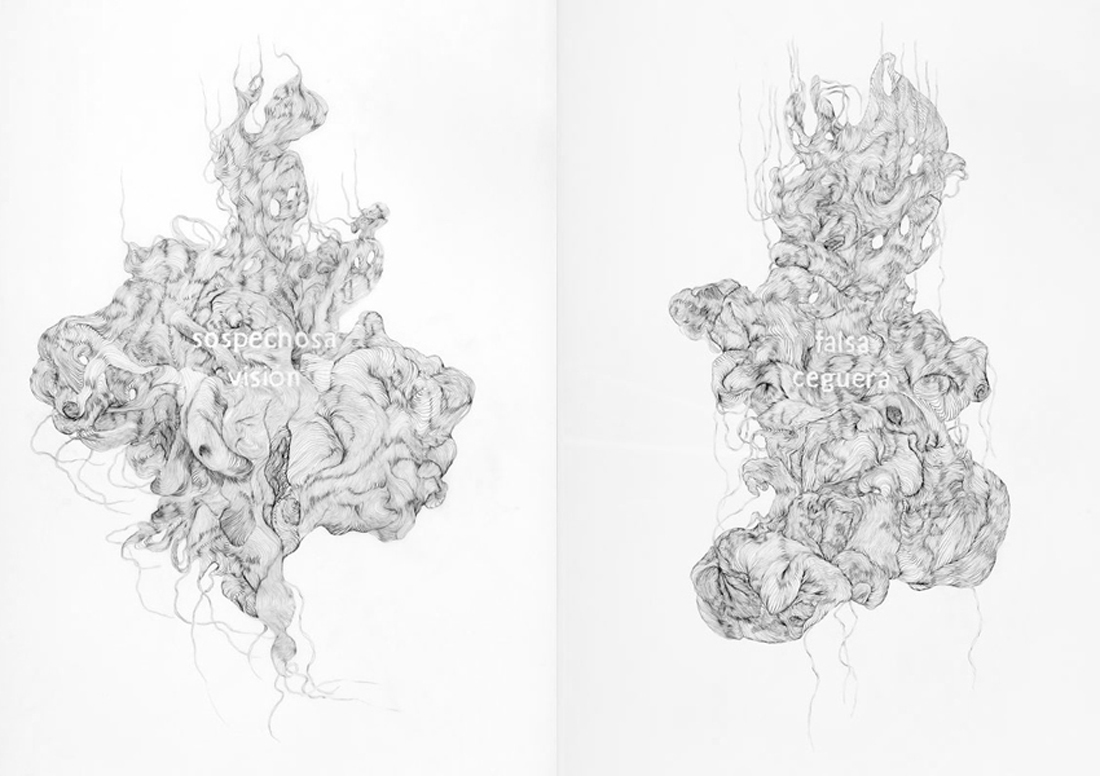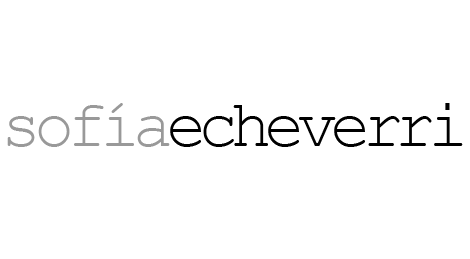Suspicisiousvision / falseblindness

Suspicisiousvision/falseblindness is an exhibition that proposes a simultaneous sequence of pieces produced in distinct series from each other, although penetrated by common elements. What defines each series is its display of images and the aspects that permit the assembly line interpretation of everything exhibited; it shows that a discursive nucleus in which Sofía Echeverri consists in what is known in the context of post-modernity as the technologies of the “I”; that is to say, the representation of situations—figurative and abstract—in which the subject of the image or the formal sequence carries out self-examination ceremonies (anachoresis) looking to obtain knowledge about everyday experiences or about the field in which that “I” or those forms move, and that in this case they appear as images that initiate dialog—tense, ironic, affirmative—with references to the contemporary artistic medium.
The compared interpretation of the series as a whole and the comparative interpretation of the interior of each piece in particular (precisely because they are made from the logic of intervention) work in terms of the vision of a plastic palimpsest, a “document” in which borders are noted, made atop layers that also contain graphic design. As such, the two levels of drawing, whether by superimposing of papers or by cohabitation of dissimilar figures in a same format, configure iconography or contradictory structures that produce, basically, two types of meaning: On the one hand, the unfolding of sequences of geometrically circular elements that reveals the essence of the natural figures; on the other hand, complex linear formations that represent processes of collapse or mutations in which the beginning of order and random expansion coexist.
The esthetics of the pieces in which post-geometric and pro-organic forms are seen meandering (Células/Cells series) mobilizes a register in which abstraction is open and it ceases to be the choice of a modern style of visual representation; indeed, in its tactic of restructuring extravagant blueprint it alludes to a tale about the transformation that comes from the un-modern relationship that the abstract practices of the last thirty years (Cfr. Franz Ackermann, the collective Knowbotic Research, Peter Halley) established when they involved this type of vision with the necessity of building maps or models of fragments of social, economic and mental reality. The games that make working with some policies of intervention possible give discursive consistency to the work of Sofía Echeverri in a very discursive and rarely consistent cultural medium; parallely, the productive fixation of said discourse in producing contributions to aesthetics based on systems, supplies the conditions needed to see sospechosavisión / falsaceguera Suspicisiousvision/Falseblindness, recognizing that we are on the side of the senses/meaning.
